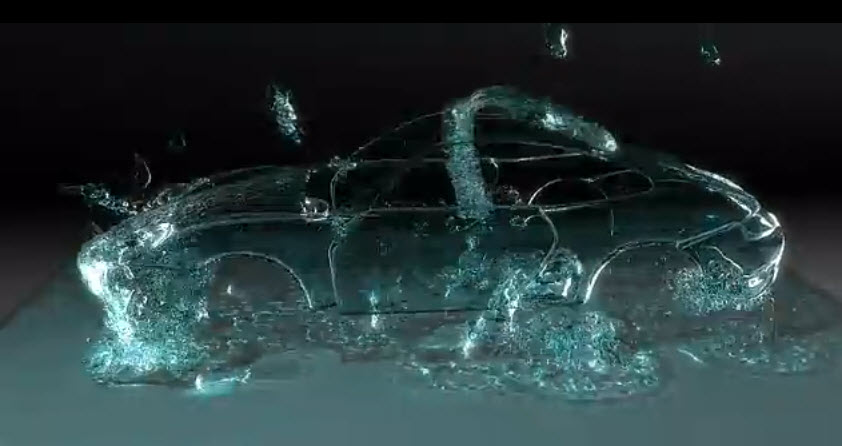

The second includes faking a set-up but allows for faster iteration.You’ll learn several modelling tricks when simulating an object inside a container such as having only the bottle interior used for calculation.Later you’ll dive into more higher-level topics like how to direct & animate several parameters over time, such as adjusting the cork’s mass once the champagne releases.Other professional tricks include a sheeter daemon for a more appealing splash and using two gravity daemons with the help of the exclusive linking feature.
Here’s something pretty basic but also incredible valuable: a solid workflow for creating logo animations.You’ll start off exporting vectors from Illustrator with the export preset set to Illustrator 8. RealFlow comes with three main liquid solver systems: Standard(the legacy simulation), Dyverso(small-scale simulation) and Hybrido(large-scale simulation).In this tutorial you’ll learn how to use Hybrido interacting with a yacht in an ocean.The tricky part of this tutorial is the set-up, which includes a moving emitter and k-volume daemon rather than one large Hybrido tank.You’ll also texture and render the simulation all inside RealFlow using the built-in Maxwell renderer which is quite a task all on its own. With the integration of Arnold + Maya you’ll probably pass on using the Blinn Shader, but many of the explained node texture set-ups can still be applicable. This demonstration shows you how to create a lava simulation in two methods: using native Maya tools and using standalone RealFlow.The Maya version uses being affected by gravity with the render types set to blobby surface.The standalone part simply uses the native emitter with higher viscosity.Both set-ups are textured in Maya using ramp mixed with two cloud nodes. It certainly looks complex but thankfully it is easy to set-up once you know what you’re doing.This video covers blocking the path in 3ds Max and uses that starting point to move into RealFlow.You’ll learn several production tips such as avoiding intersection of Dspline radius points, using drag, and working with the noise daemon to achieve a natural flow.
#Free realflow video tutorials tv
Easily the most interesting feature in RealFlow is how you can control a liquid simulation using a spline path.Think of juice commercials on TV where a liquid stream circles around a bottle and eventually settles down inside a container. Or using two emitters in an otherwise one emitter set-up.The key effect here is using the filter daemon which let you swap different water systems upon meeting a predefined condition, in this case.For this to work seamlessly the two systems must have the same resolution and solve type. You’ll get a slew of parameters dedicated to the solver once you switch over.And from this video you’ll learn how to combine settings such as increasing friction and static friction to achieve clumping behavior resembling wet sand.While projects requiring sand are not super common, at least you’ll know where to turn to if this comes up! With this handy video guide Darkins begins by modelling a heart geometry and continues to make a RealFlow set-up inside Cinema 4D.In this demonstration you’ll learn how Cinema 4D’s native rigid body system works well with RealFlow’s collider tag.The highlight of this tutorial is the crown daemon, which allows you to specify the shape of any splash you create.It comes with an intuitive spline interface that can be tweaked with normal bezier handles. Default value is Position-Based Dynamics(PDB). It’s a valuable piece of knowledge for anyone working in this area for the first time.Making a granular simulation can be done by switching the solver type to Granular.

After establishing a reliable liquid solver, RealFlow introduced a granular solver in 2017 that’s responsible for creating sand and snow simulation.This tutorial starts off describing how to troubleshoot if the simulation doesn’t work if the creation order of colliders and emitters are mixed up. You’ll also learn how to integrate the wind daemon for an interesting water flow.


 0 kommentar(er)
0 kommentar(er)
